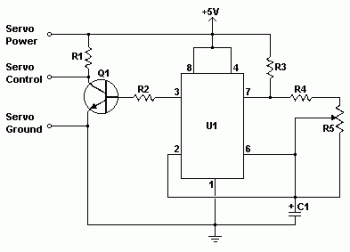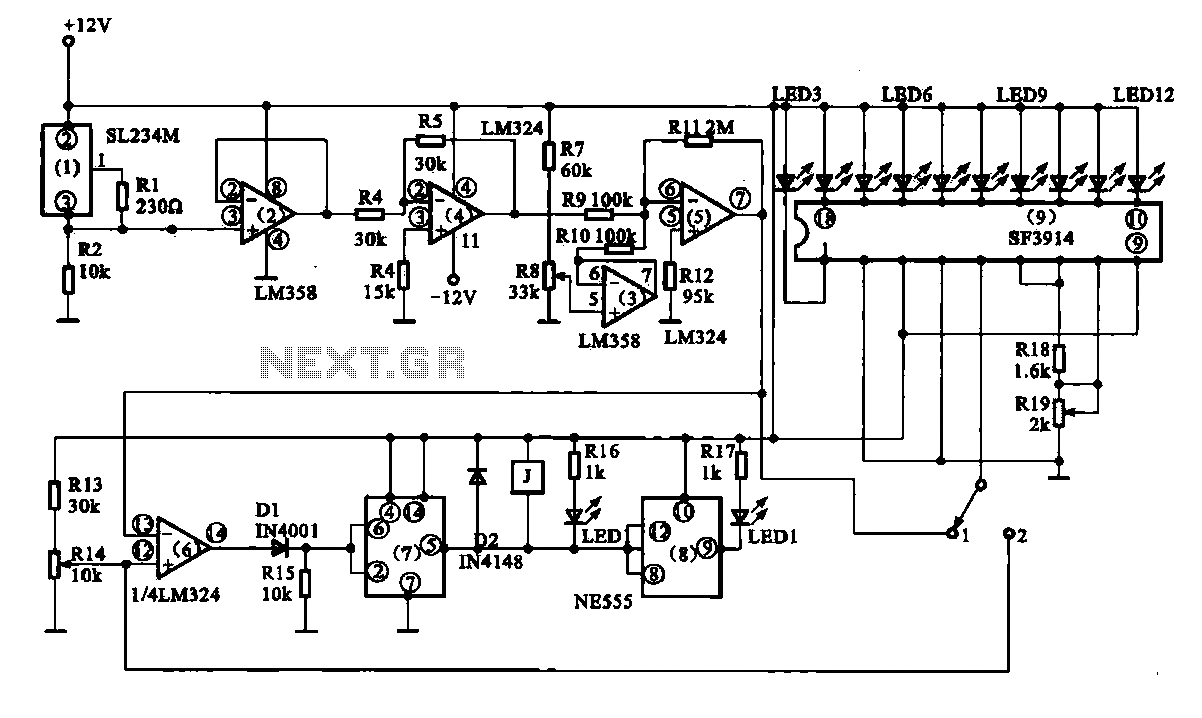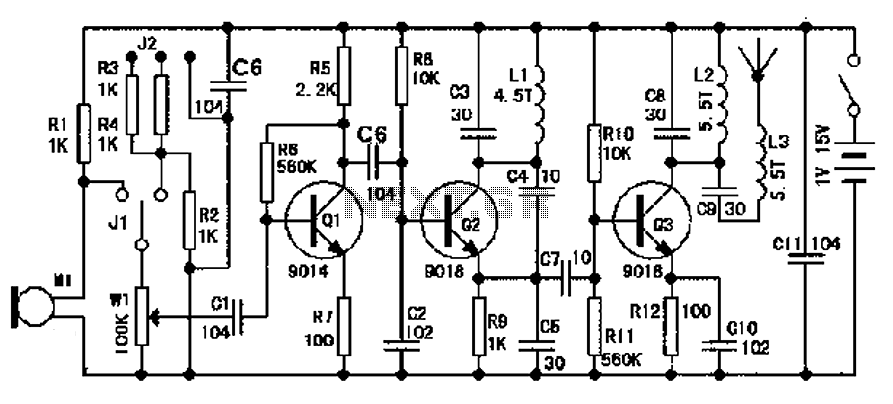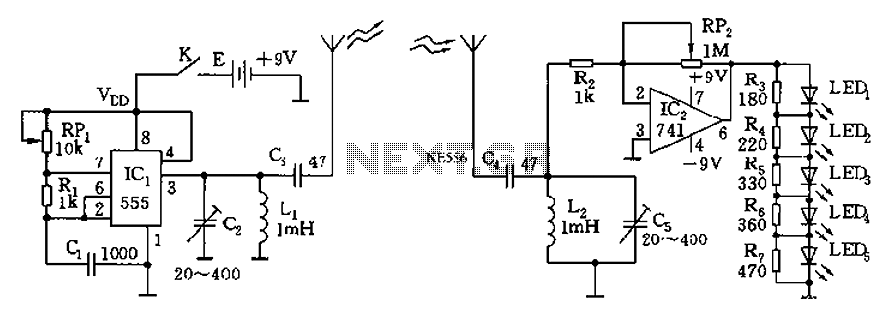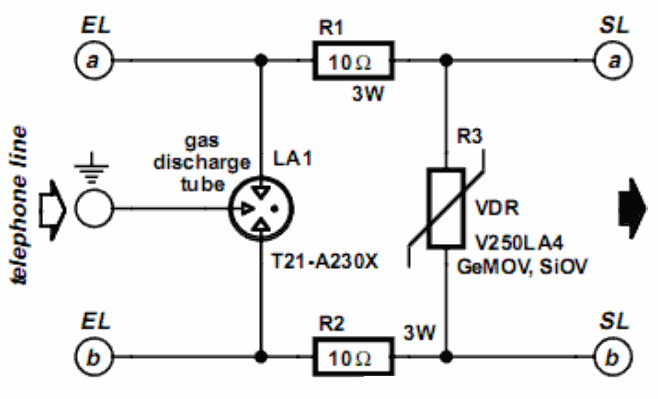
Do Oscillation Building Circuit by Your Self!
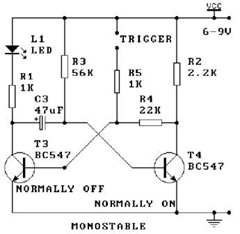
An oscillator is a mechanical or electronic device that operates based on the principles of oscillation. Oscillators serve as fundamental building blocks upon which the entire structure of electronics and computers is established. An article is available that explains how to create an oscillation kit using a constant voltage applied to a simple circuit composed of two transistors, two capacitors, and four resistors. By modifying the component values of the oscillation circuit, it is possible to generate a square wave at any desired frequency and mark/space ratio. The article describes three circuits, allowing for experimentation with each. These three oscillation circuits include the Flip-Flop/Bi-stable, the Monostable Multivibrator, and the Astable or Free Running Multivibrator. Assembly instructions and descriptions for each circuit are provided.
An oscillator circuit is essential in various applications, including signal generation, clock pulses for digital circuits, and waveform shaping. The Flip-Flop/Bi-stable circuit is a type of digital memory circuit that can hold one of two states indefinitely until triggered to switch states. It is commonly used in memory storage and data processing applications.
The Monostable Multivibrator, on the other hand, is a circuit that generates a single output pulse in response to an input trigger. The duration of the output pulse can be controlled by adjusting the values of the resistors and capacitors in the circuit, making it useful for timing applications and pulse width modulation.
The Astable or Free Running Multivibrator is a circuit that continuously oscillates between its two unstable states, producing a square wave output. This circuit can be easily configured to generate a wide range of frequencies by varying the resistor and capacitor values, making it ideal for applications such as clock generation and tone generation in audio circuits.
Each of these circuits can be built using standard electronic components, and the article provides detailed assembly instructions, including schematic diagrams and component values, to facilitate construction and experimentation. By understanding the operational principles and characteristics of these oscillation circuits, users can gain valuable insights into electronic design and applications.oscillator is a mechanical or electronic device that works on this principles of oscillation. Oscillators are a basic building blockupon which the whole structure of electronics and computers is based. Here you can find an article about how to make an oscilation kit from a constant voltage which is applied to a simple circuit consisting of 2 transi
stors, 2 capacitors and 4 resistors. Sounds great, right Accordingly, you can just try to change the component value of theoscilation circuit type, then you have had a square wave generator for whatever frequency and mark/space ratio you wish. It describes three circuits, and allows you to experiment with them. Those threeoscilation circuitsare The Flip Flop/Bi-stable, The Monostable Multivibrator, and The Astable or Free Running MV.
You will have an assembly instruction and desription of each circuit within. 🔗 External reference
An oscillator circuit is essential in various applications, including signal generation, clock pulses for digital circuits, and waveform shaping. The Flip-Flop/Bi-stable circuit is a type of digital memory circuit that can hold one of two states indefinitely until triggered to switch states. It is commonly used in memory storage and data processing applications.
The Monostable Multivibrator, on the other hand, is a circuit that generates a single output pulse in response to an input trigger. The duration of the output pulse can be controlled by adjusting the values of the resistors and capacitors in the circuit, making it useful for timing applications and pulse width modulation.
The Astable or Free Running Multivibrator is a circuit that continuously oscillates between its two unstable states, producing a square wave output. This circuit can be easily configured to generate a wide range of frequencies by varying the resistor and capacitor values, making it ideal for applications such as clock generation and tone generation in audio circuits.
Each of these circuits can be built using standard electronic components, and the article provides detailed assembly instructions, including schematic diagrams and component values, to facilitate construction and experimentation. By understanding the operational principles and characteristics of these oscillation circuits, users can gain valuable insights into electronic design and applications.oscillator is a mechanical or electronic device that works on this principles of oscillation. Oscillators are a basic building blockupon which the whole structure of electronics and computers is based. Here you can find an article about how to make an oscilation kit from a constant voltage which is applied to a simple circuit consisting of 2 transi
stors, 2 capacitors and 4 resistors. Sounds great, right Accordingly, you can just try to change the component value of theoscilation circuit type, then you have had a square wave generator for whatever frequency and mark/space ratio you wish. It describes three circuits, and allows you to experiment with them. Those threeoscilation circuitsare The Flip Flop/Bi-stable, The Monostable Multivibrator, and The Astable or Free Running MV.
You will have an assembly instruction and desription of each circuit within. 🔗 External reference
